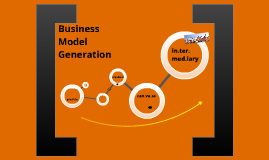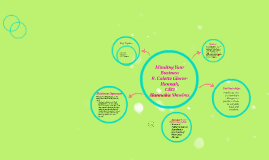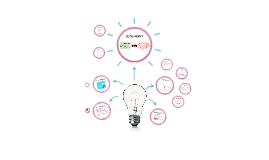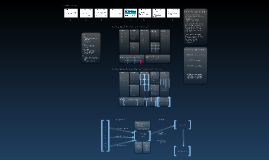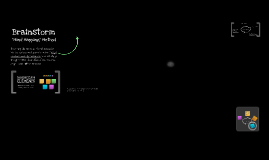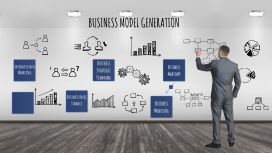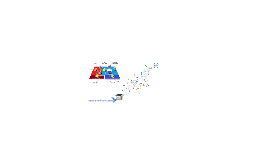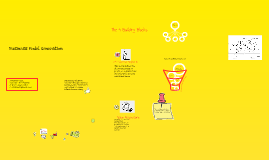BUSINESS MODEL GENERATION
Transcript: BUSINESS MODEL GENERATION Business Anatomy A series of activities that create value for a paying customer. What is Business? Business Component Business Components are; 1- PROCESSES 2- Resources 3-Customers Process is A series of actions that produce a change process Resources Resources - Human Resources - Physical Resources - Intellectual Resources - Financial Resources Customers Customer - Current happy customers - Current unhappy customer - Lost customers - Competitors’ customer - Prospect customer value creation flow value CREATE CARE DELIVER Value: What customer says it is. https://prezi.com/view/Hlcl0yAjp8BQuyK2sY5F/ Business Model Canvas Business Modeling https://miro.com/welcomeonboard/YzJHbzc0d0o5cDZ5VkkwZFhBWGhWNTV6anVlR1ZzclFZQTVpNlFnTU1LQll3RmkxRmJiUWdSellmZGFRaFRBY3wzNDU4NzY0NTI0NjU3NjQwMDQ1?share_link_id=151127232403 customer segmentation customer segmentation - Mass vs Niche Market - Multi-side Platform - Segmentation by; - Geographic: region, county size, city - Demographic: Age, sex, family size, income, occupation, race - Psychographic: compulsive, extrovert, introvert, conservative, leader etc. - Buyer behavior: aware of need, status, loyalty - Volume: group based on usage of product (heavy, medium, light) - Marketing factor: Brand loyal customers value proposition Customer values product or service by CQFA (Cost, Quality, Features, and Availability) value proposition - Newness - Performance - Customization - Getting the Job Done - Design - Brand/ Status - Cost reduction - Risk Reduction - Accessibility - Convenience/Usability - Financing Types of Channels - Direct Channels - Sales Force - Web Sales - Own Store - Indirect Channels - Partner Store - Wholesaler - Partner-owned Website Customer Life Cycle - Acquisition - Retention. Cost of retention is about 25% of the cost of acquisition. - Attrition, when dissatisfaction creeps in. - Defection. Churn Rate = Lost Customers of a month / (Users at the month start + Added users of the same month) - Reacquisition channels Types of Customer Relation - Personal Assistance - Dedicated Personal Assistance - Self Service - Communities - C0-Creation customer relationship VOC channels - Survey - Focus Group - Interview - Complaint System - Suggestion - Market Research - Observations - Shopper Programs voice of customers Revenue Stream Types of Revenue Stream - Assets Sales ex. car, mobile, clothes, etc. - Usage Fee ex. delivery service, cleaning, repair, etc. - Subscription Fee ex. gym, web-base games, applications, etc. - Renting/Leasing ex. car rent, office space long lease, instrument rent, etc. - Licensing license allow rights-holder to generate revenue. ex. world cup broadcasting, GSM license, patent license, etc. - Brokerage Fees ex. credit cards, property Realtor, etc. - Advertising ex. media ads, websites ads, etc Fixed Menu Pricing - List Price - Feature Dependent - Customer Segment Dependent - Volume Dependent pricing mechanisms fixed Price market condition pricing - Yield Management price depends on inventory and time of purchase. ex airlines seats, perishable resources. - Real Time Market supply and demand dependent. Ex. oil price, gold price - Auction price determined based on competitive bidding. Ex e-bay auction, the RFQ venders bidding . pricing mechanisms Market Condition Pricing Types of Resources - Human - Intellectual - Physical - Financial Key Resources KEY Activities Key activities core processes Sequential activities that provide Value Product or Service to external Customer. Sample of Core processes - Customer acquisition - Order administration - Product/ Service development - Invoicing - Shipment - Customer support Core Processes enabling processes Sample of Enabling processes - Budgeting - HR, recruitment - Regulatory compliance - Public relation - IT - Process management - Capital acquisition - Assets maximization enabling processes Types of Partnership - Strategic Alliance Between Non-Competitors - Strategic Partnership Between Competitors - Joint Venture - Buyer-Supplier Relationship to Secure Supplies Key partnership Why do business need partnership - Optimization and Economy of Scale - Risk Reduction - Acquisition of Particular Resources and Activities Motives of Partnership Cost Structure Based on the Profit and Loss Statement Cost Structure P&L basic Components - Revenue (or Sales) - Cost of Goods Sold (or Cost of Sales) - Selling Expenses - General & Administrative (G&A) Expenses - Marketing and Advertising - Technology/Research & Development - Interest Expense - Taxes - Depreciation - Amortization - Net Income Cost Categories general ledger sample general ledger - Cash - Inventory - Fixed Assets - Accounts Receivable - Capital - Debt - Accounts Payable - Accrued Expenses - Sales or Revenue - Dividend - Interest Income - Opex - Cost of Acquisition - Administrative Expenses - Depreciation - Taxes Break Even Calculations Product Break Even Break-even point = Fixed costs / (Selling price per unit - Variable cost per unit)






